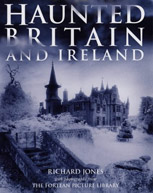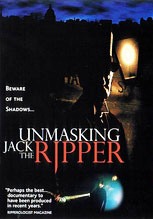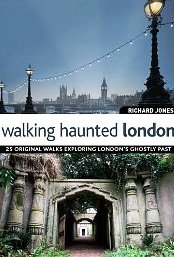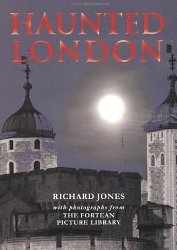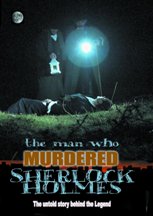And Did Those Feet In Ancient Times?

Glastonbury Tor
Photograph By John Mason
The Haunted Realm
MYSTICAL AND MYSTERIOUS GLASTONBURY
Glastonbury is probably one of the world’s best known Mystical sites.
It has been a sacred place for over 2,000 years and has connections with St Patrick, King Arthur, not to mention the Celitc God of the Underworld, Gwyn ap Nudd.
There is even a tradition that, as a boy, Jesus himself visited Glastonbury in the company of his uncle Joseph of Arimathea.
GLASTONBURY TOR
The town of Glastonbury huddles amidst a cluster of hills, the highest of which, Glastonbury Tor (Tor meaning rocky peak or hill), rises sheer from the Somerset plains and dominates the adjoining countryside, a striking landmark visible from miles around.

St Michael's Tower
Photograph By John Mason
The Haunted Realm
Long ago the surrounding plains were covered by water, and for centuries the Tor was an islet known as Ynis Witrin, meaning "Isle of Glass."
Its very isolation may well have given it a decidedly otherworldly feel and hence it came to be seen as a place where strange beings resided.
Consequently many legends came to cling to its enigmatic summit, all of which shared the common thread that this soft green hill was a place where the veil between this world and another more mysterious and hidden realm was believed to be at its thinnest.
AN ENTRANCE TO THE UNDERWORLD
To the Celts the Tor was the entrance to the underworld and was believed to be the home to Gwyn ap Nudd, the Lord of the Underworld.
He later evolved into the King of the Fairies and the Tor, so it was believed, was the place where he held his court.
DON'T GO OUT ONTO THE TOR
As such, people came to see it as a place that was to be avoided at all costs. Local people were well aware of the dangers of straying into his realm.
One of them was that you might only have spent a few hours there, yet when you returned to this world you would have found that many years had passed.
THE HOSPITALITY OF THE FAIRIES
Another worry was that if you accepted the hospitality of the fairies and partook of their food and drink you would never be able to leave their world again.
ST COLLEN BREAKS THE SPELL
Christianity, of course, sought to conquer these old beliefs and thus one of the Tor’s most famous legends tells how St Collen, a pious sixth century monk, who lived as a hermit in a cell atop the Tor, was invited to meet with Gwyn ap Nudd.
Having declined Gwyn’s offer of food, Collen proceeded to douse him in holy water, whereupon the King and his court vanished, and Collen found himself alone upon the cold hillside.
However, St Collen’s attempts to rid the hill of the baleful influence of the fairies may not of been a complete and permanent success, for on September 11th 1275 an earthquake shook the Tor and brought the newly built Church of St Michael tumbling down.
Many locals were convinced that the destruction was the work of the fairies.
The church was rebuilt, but it didn’t last and all that now remains of it is the gaunt tower that was added in the 1360s and which makes a truly striking and mysterious landmark on top of its lofty perch.
THE RESTING PLACE OF THE HOLY GRAIL
Glastonbury though had been designated sacred long before St Collen arrived upon the Tor to do battle with the fairies.

Glastonbury Abbet
Photograph By John Mason
The Haunted Realm
Tradition holds that, in the early days of Christianity, St Joseph of Arimathea arrived in England to preach the Gospel and that he brought with him the Chalice from the Last Supper, the fabled Holy Grail into which the blood and sweat of the crucified Christ had flowed.
Climbing the middle one of Glastonbury’s three hills and weary from his journey, he paused to rest, and drove his staff into the ground where it took root and flowered, becoming the celebrated Glastonbury Thorn, which used to blossom every Christmas, until it was cut down by a zealous Puritan in the 17th century.
Today the hill is known as "Wearyall Hill" in commemoration of Joseph’s exhaustion, and a scion of the original thorn still grows upon its summit.
Having recovered his strength, Joseph is said to have built a chapel on a site close to where the ragged vestiges of Glastonbury Abbey now stand.
This humble little foundation of wattle and daub was later believed to have been the first Christian Church in England and from its foundations sprang Glastonbury’s reputation as one of the holiest places on earth, a place to which pilgrim’s once flocked in their thousands to kneel in awe, and pluck a sprig from the Holy Thorn in order that it might be buried with them, thus ensuring them swift passage into the joys of heaven.
As the original chapel flourished into a magnificent monastic foundation so did the legends of Glastonbury grow.
ST PATRICK AT GLASTONBURY
We hear of St Patrick, returning here to become Abbot, having converted Ireland.

The Abbey Ruins
Photograph By John Mason
The Haunted Realm
But the strongest and most deeply held belief of all, and the one that truly helped make Glastonbury a mystical place, was that Joseph of Arimethea had buried the Holy Grail beneath the third of Glastonbury’s three hills, Chalice Hill.
In the tranquil gardens beneath its slopes, ice-cold water still babbles from an ornate wellhead. Heavily impregnated with iron, the red-tinged liquid, which tastes clean and fresh, was long thought to be stained with the blood of Christ and, as a result, many a medieval pilgrim would kneel before the spring, trembling and crying with emotion.
Today people still come to this lovely little garden to enjoy a few moments contemplation and to fill containers with the water in the hope of absorbing its spiritual qualities.
KING ARTHUR BURIED AT GLASTONBURY
But, of all the legendary figures to have been associated with Glastonbury and its Abbey, few can be as famous, or as elusive, as King Arthur, whose burial place the Abbey was reputed to have been.
In 1184, the old Abbey was destroyed by fire, its library, countless treasures as well as the hallowed little church built by Joseph of Arimathea, all perishing in the flames.
The King - Henry 11 - contributed generously to the rebuilding work and, by 1186, the lovely Romanesque Lady Chapel at the west end of the church had been completed.
THE GRAVE OF ARTHUR AND GUINEVERE
In 1190, the monks, apparently acting on information passed to them by Henry prior to his death in 1189, began making "strenuous efforts" to find Arthur’s grave.

King Arthurs Grave
Glastonbury Abbey
Photograph By John Mason
The Haunted Realm
In the Abbey cemetery, having dug down to a depth of sixteen feet, they found two skeletons in the hollowed out trunk of an oak tree.
With them was a leaden cross on which was inscribed in Latin either "Here lies Arthur, the famous King of the Isle of Avalon," or, "Here lies Arthur, king that was, king that shall be."
Arthur’s bones are said to have been much larger than those of a normal man, whilst Guinevere’s skeleton was, reputedly, crowned with a splendid head of golden hair!
On the 19th April 1278, the two skeletons’ were re-interred in a black marble tomb inside the church and from then on the Abbey benefited immensely from the additional pilgrim traffic that their presence generated.
Of course, whether the remains were or were not those of Arthur now matters little.
The tomb was destroyed along with much of the Abbey at the Dissolution, and a modern plaque is all that now marks its site.
THE GHOSTS OF GLASTONBURY ABBEY
In 1907, Frederick Bligh Bond was employed to excavate the 12th century ruins of the Benedictine Abbey.
His endeavours uncovered two previously unknown chapels, plus sundry other important and impressive finds.
But, in 1916 he revealed in his book Gates of Remembrance that the spirits of long dead monks, communicating through his friend, the medium John Bartlett, had guided his excavations.
The church authorities were incensed by the disclosure and promptly sacked him, despite the apparent success of his methods.
GLASTONBURY A SPECIAL AND MYSTICAL PLACE
But, ghosts and King Arthur aside, what cannot be denied is that Glastonbury is a special and mystical place and no-one who arrives here early on those magical mornings when a ghostly mist smothers the surrounding fields, and the domed bulk of Glastonbury Tor rises from it, an island once again, can fail to be moved by the stunning and breathtaking sight that greets them.

